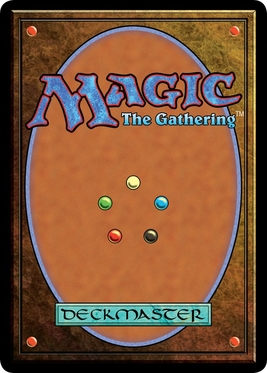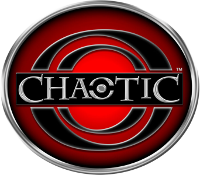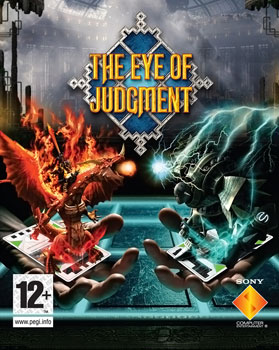
Magic: The Gathering is a tabletop and digital collectible card game created by Richard Garfield. Released in 1993 by Wizards of the Coast, Magic was the first trading card game and had approximately fifty million players as of February 2023. Over twenty billion Magic cards were produced in the period from 2008 to 2016, during which time it grew in popularity. As of the 2022 fiscal year, Magic generates over $1 billion in revenue annually.

The Pokémon Trading Card Game, abbreviated as PTCG or Pokémon TCG, is a collectible card game developed by Creatures Inc. based on the Pokémon franchise. Standard gameplay cards include Pokémon cards, energy cards, trainer cards, and stadium cards, a variant of trainer cards. Pokémon cards contain data about the creature's type, attacks, ability, and HP as well as any special effects the cards have on the game. Basic (unevolved) Pokémon can change into their evolved forms during the game by playing subsequent evolution cards in the deck. Energy cards can be attached to Pokémon cards to power up attacks, and trainer cards can be used for different effects on the game. Card effects often rely on elements of luck, such as dice rolls and coin tosses, to decide an outcome. Counters are stacked on top of cards in play to indicate damage dealt, and players may choose to put their Pokémon cards on a bench to switch to a different attacker.

Chaotic was originally a Danish trading card game. It expanded to an online game in America which then became a television program based on the game. The program aired on 4Kids TV, Jetix, The CW4Kids, Cartoon Network and Disney XD. It was brought over to the United States from Denmark by Bryan C. Gannon and Chaotic USA Entertainment Group, and produced by Chaotic USA Entertainment Group, 4Kids Productions and Bardel Entertainment. The trading card game came out 6 September 2006 in the U.S. and Canada.

The Yu-Gi-Oh! Trading Card Game is a collectible card game developed and published by Konami. It is based on the fictional game of Duel Monsters created by manga artist Kazuki Takahashi, which appears in portions of the manga franchise Yu-Gi-Oh! and is the central plot device throughout its various anime adaptations and spinoff series.
Vampire: The Eternal Struggle is a multiplayer collectible card game published by White Wolf Publishing. It is set in the World of Darkness and is based on the Vampire: The Masquerade roleplaying game.

The Duel Masters Trading Card Game is a two-player or two vs. two team collectible card game (CCG) jointly developed by Wizards of the Coast and Takara Tomy. The card game is part of the Duel Masters franchise.
The collectible card game Magic: The Gathering published seven expansion sets from 1993–1995, and one compilation set. These sets contained new cards that "expanded" on the base sets of Magic with their own mechanical theme and setting; these new cards could be played on their own, or mixed in with decks created from cards in the base sets. With Magic's runaway success, many of the printings of these early sets were too small to satisfy the rapidly growing fanbase. Cards from them became rare, hard to find, and expensive. It was not until Fallen Empires and Homelands that Wizards of the Coast was able to print enough cards to meet demand; additionally, Wizards of the Coast published Chronicles, a reprint set that helped fix many of the scarcity issues with the earliest sets.

The Harry Potter Trading Card Game is an out-of-print collectible card game based in the world of J. K. Rowling's Harry Potter novels. Created by Wizards of the Coast in August 2001, the game was designed to compete with the Yu-Gi-Oh!, Pokémon and Magic: The Gathering card games. Its release was timed to coincide with the theatrical premiere of the first film in the series. The game was praised for the way it immersed children in the Harry Potter universe. At one point the game was the second best selling toy in the United States; however, it is now out of print.

The World of Warcraft Trading Card Game is an out-of-print collectible card game based on Blizzard Entertainment's MMORPG, World of Warcraft. The game was announced by Upper Deck Entertainment on August 18, 2005 and released on October 25, 2006. Players can play against each other one-on-one, or can join others in order to defeat dungeon/raid "bosses" based on those in the MMORPG. In March 2010, Upper Deck lost the license from Blizzard Entertainment. The license was acquired by Cryptozoic Entertainment later in the month, with the company announcing that planned card sets would be released.
The collectible card game Magic: The Gathering has released compilation sets, reprint sets, and box sets over its history. These are distinct from core sets and expansion sets, the most heavily marketed sources of new cards. With the exception of Chronicles, reprint sets generally do not affect tournament legality in supported formats; for example, cards reprinted in the Modern Masters reprint set, while legal for tournament play, did not necessarily cause the card to be included in the "Standard" environment.
Dreamblade is a collectible miniatures game created by Wizards of the Coast that debuted on August 9, 2006, the day before Gen Con Indy. The game is a strategy contest that includes an element of chance which comes into play through various die rolls.

Horus Heresy is an out-of-print collectible card game originally produced in 2003 by Sabertooth Games. The game is set in the Warhammer 40,000 fictional universe developed by parent company Games Workshop. It attempts to recreate the struggle between the Loyalist forces of the Emperor of Mankind and the Traitor forces of Warmaster Horus, during the civil war known as the Horus Heresy. The game's development and sale by the publisher were discontinued in 2008, following financial difficulties at the parent company.
Magic: The Gathering formats are various ways in which the Magic: The Gathering collectible card game can be played. Each format provides rules for deck construction and gameplay, with many confining the pool of permitted cards to those released in a specified group of Magic card sets. The Wizards Play Network, the governing body that oversees official Magic competitive play, categorizes its tournament formats into Constructed and Limited. Additionally, there are many casual formats with the Commander format being one of the most popular formats of the game.

The Eye of Judgment is a turn-based card battle video game for the PlayStation 3 platform, which utilizes the PlayStation Eye camera peripheral. It is the first game to use the peripheral, with which it was available in a bundle in Japan, Europe, the Middle East, and North America. Once planned for release close to the PlayStation 3 launch in November 2006, the game was eventually released on October 25, 2007 as Set 1 in Japan.

The Bleach Trading Card Game is an out-of-print collectible card game from Score Entertainment, and is based on the manga and anime series of the same name. The game received a nomination for Origin's "Game of the Year" and earned a semi-finalist position.
Star Wars PocketModel Trading Card Game is an out-of-print tabletop game manufactured by WizKids, Inc. that debuted in 2007, based on the Star Wars universe. The game was designed by Mike Elliott and Ethan Pasternack.
Chaotic is an American animated science fantasy television series produced by 4Kids Entertainment. It was animated by Canadian studio Bardel Entertainment for season 1 and South Korean studio Dong Woo Animation for season 2 and 3. It is based on the Danish trading card game of the same name, with most of the plot based on the original storyline of the Danish trading card game.
Before its current form, the Chaotic Trading Card Game had several names and versions. Starting in Denmark, Dracco Heads was a children's collectors product featuring plastic figurines of strange creatures. In 2000, a trading card game called Grolls & Gorks was published featuring characters and creatures from Dracco Heads. The next year, the game was redesigned by Bryan C. Gannon, and renamed Chaotic: Now or Never! This version of the card game had many characters and cards on which the current version of the Chaotic game and the television series are based.
The rules of Magic: The Gathering were originally developed by the game's creator, Richard Garfield, and accompanied the first version of the game in 1993. The rules of Magic have been changed frequently over the years by the manufacturer, Wizards of the Coast, mostly in minor ways. However, major rules overhauls have also been done a few times.










